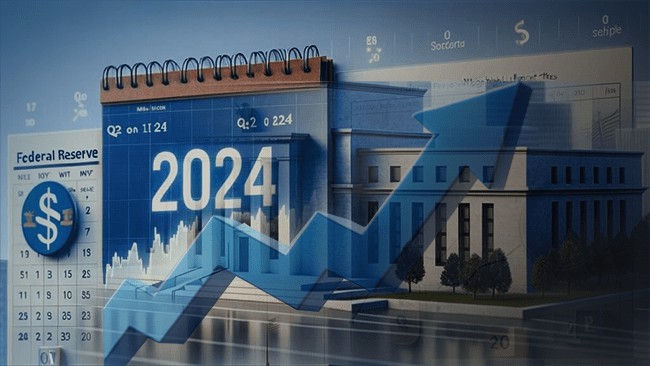The U.S. Federal Reserve (Federal Reserve) will hold its first monetary policy meeting in 2024 on Thursday (February 1), Beijing time, to announce interest rate decisions and policy statements.

According to the International Monetary Fund's (IMF) interest rate observations of the Federal Reserve, the market has high expectations of keeping interest rates unchanged at this meeting, and the probability of raising or lowering interest rates is less than 5%.
Analysts believe that the inflationary pressure and economic growth prospects currently faced by the Fed are not enough to support its change of monetary policy stance, so this meeting may be a "non-event" with limited impact on financial markets.
The Federal Reserve raised interest rates a total of four times in 2023, raising the federal funds rate target range to a level of 5.25% to 5.50%, setting a new high since September 2007.
Federal Reserve Chairman Powell said at a press conference in December last year that the Federal Reserve will flexibly adjust the pace and direction of monetary policy based on changes in economic data.
He also said the Fed would consider scaling back its $120 billion monthly asset purchase program at the appropriate time to address inflation risks and financial stability risks.
However, there has been no significant deterioration in U.S. inflation data since the last meeting. According to data from the U.S. Department of Labor, the U.S. Consumer Price Index (CPI) rose 6.8% year-on-year in December 2023, the same as in November and the highest level since September 1982.
However, core CPI (excluding food and energy prices) rose 4.9% year-on-year, down from 5.0% in November and the lowest level since July last year.
In addition, the U.S. personal consumption expenditures price index (PCE), the Federal Reserve's inflation target indicator, rose 4.7% year-on-year in November 2023, the same as in October and the highest level since April 1991. But core PCE rose 3.5% year-on-year, down from 3.7% in October and the lowest level since June last year.
These data show that although inflationary pressure in the United States is still high, it has not intensified further, and some inflationary factors may have peaked or begun to fall.
At the same time, the economic growth prospects of the United States have not improved significantly. According to data from the U.S. Department of Commerce, in the fourth quarter of 2023, the U.S. gross domestic product (GDP) is initially estimated to grow by 5.5% year-on-year, lower than the 6.1% growth in the third quarter and lower than market expectations of 6.0%.
The U.S. consumer confidence and business confidence indices also declined to varying degrees in December last year, reflecting the adverse impact on economic activity of factors such as the worsening of the COVID-19 epidemic, high inflation, and tight supply chains.
Although the U.S. job market still maintains a solid growth trend, the unemployment rate rose to 3.9% in December, higher than 3.8% in November and higher than market expectations of 3.7%.
Taken together, the U.S. economic growth momentum has weakened and still needs the support of the Federal Reserve's monetary policy.
Summarize:
Analysts generally believe that the Federal Reserve is likely to keep interest rates unchanged at this week's meeting and suspend the pace of tightening monetary policy.
The Fed is likely to reiterate its watch on inflation and its assessment of the economy, but will not give clear hints on its outlook for monetary policy. Market expectations for this meeting are low, so the impact on financial markets will be limited.
The trend of the U.S. dollar and U.S. Treasuries may be affected by the wording and tone of the Federal Reserve's policy statement, while the stock market may be affected by corporate earnings reports and epidemic developments.
Analysts predict that the Fed's decision to raise or cut interest rates in 2024 will depend on the performance of inflation and economic data in the coming months, as well as the Fed's adjustments to its asset purchase plan.
As a result, market attention is likely to turn to the Federal Reserve's meetings in March and June, when the Fed is likely to update its economic forecasts and dot plots to reflect its latest views on monetary policy. #熱門話題 #內(nèi)容挖礦
